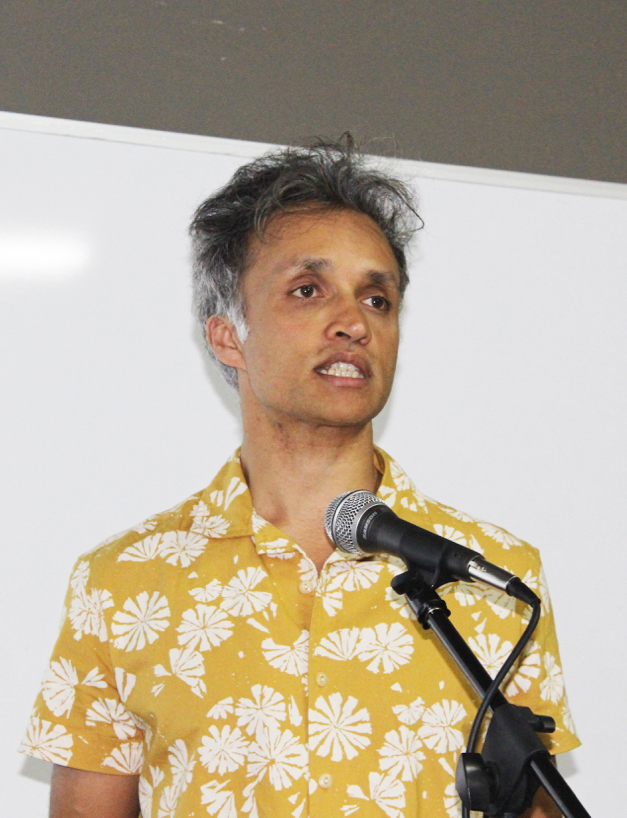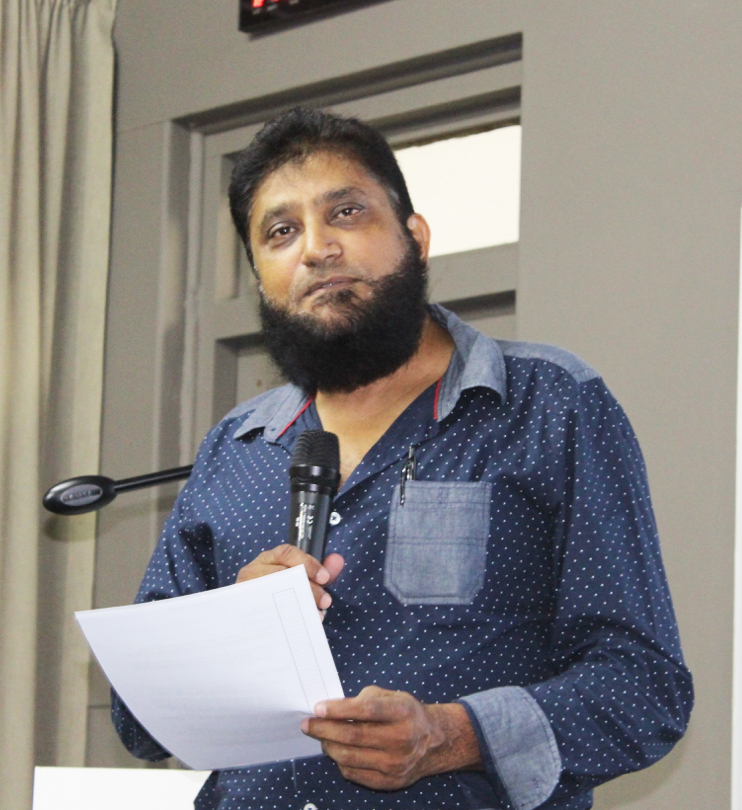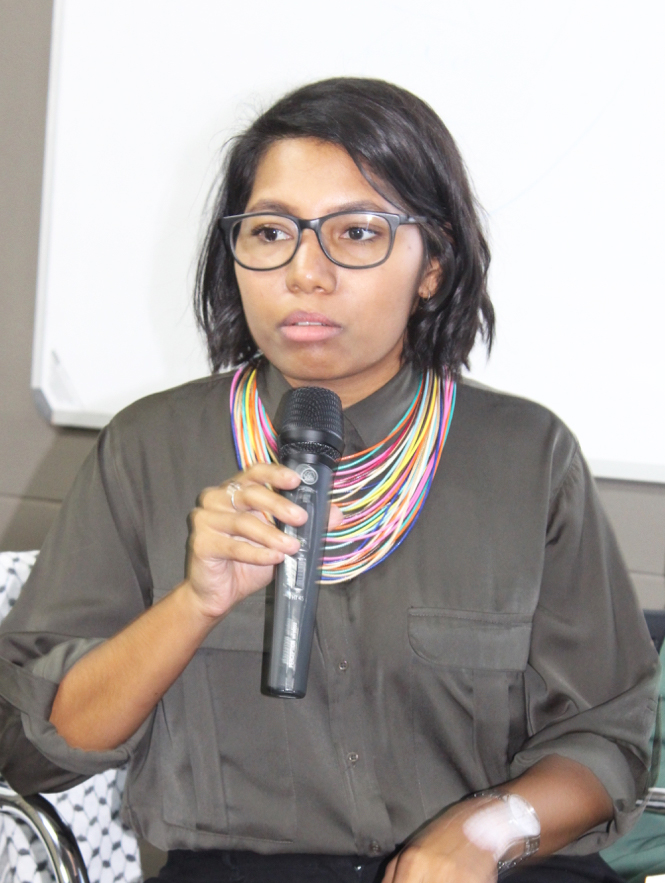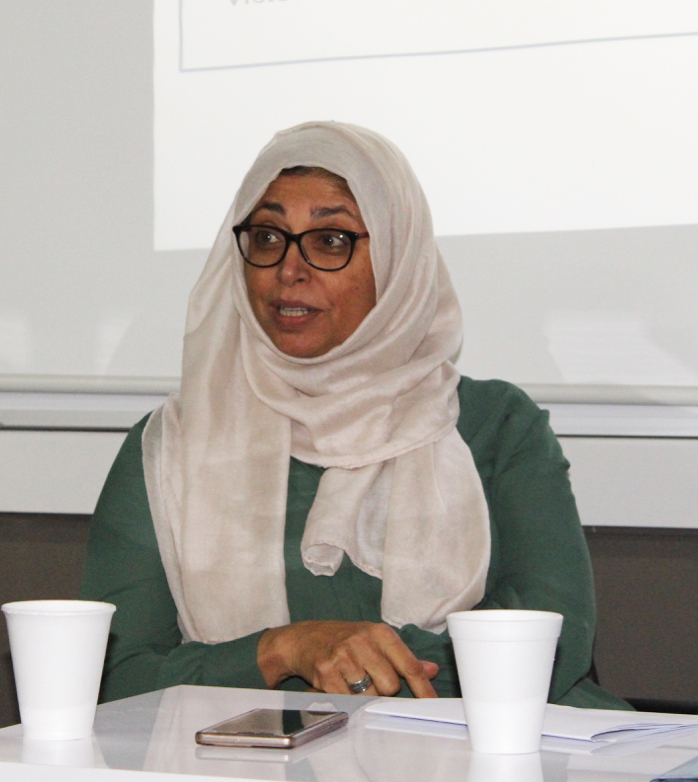Despite calls for mosques to blend into the environment and be as close to traditional English shapes, the minaret is here to stay – this is what architect Shahed Saleem, author of The British Mosque said in Durban this week. Saleem graciously included two talks on his family trip to Durban, after taking in the scenic Drakensburg Mountains, a trip made memorable by his sons Ayman and Zakaria (ages 7 and 10 respectively) being the youngest to trek the 18km round trip to the Marble Bath Cave. Hosted on Thursday afternoon by the local Institute for Architects (SAIA-KZN), Saleem brought his story to our shores, sharing his 8 years of research with architects from a range of backgrounds, providing insight and discussion around the themes of heritage, research, and future possibilities. His book, which has been warmly received, by both architects and the Muslim community alike, is described as an architectural and social history of Muslim places of worship in England.
The British Mosque
The British Mosque serves as a representation of a diverse community within a cosmopolitan country with its own rich heritage, the time was overdue for other stories to be documented therein, the story of the Muslim diaspora included. Baroness Warsi, a Muslim British cabinet member, has said that mosques should be redesigned without minarets so that they “look like English places of worship”. With regards to the call for future mosques to blend in with the traditional English environment, Saleem commented “If you asked me if mosques that are built 50 years from now would have minarets – then I would have to say yes”. The conversation continued that evening, hosted by the Islamic Forum and the Association for Muslim Built Environment Professionals (AMBEP) at the Suleman Lockhat Auditorium where local architect Adheema Davis chaired a panel comprising Saleem and local community activist, Aneesa Vawda-Moosa, introducing the research and call for reflection to our local community. Jameel Shaikh, member of AMBEP, briefly shared their role in the built environment.
Saleem told the tale of his research over time, with visuals describing the evolving relationship that a growing Muslim community had with their adopted home in the UK and the resulting form of the mosque. The socio-politics of migrancy and cultural difference were hard to ignore, despite the firm grip of planning regulations, to which any architect can attest to, the conversation of the British Mosque has stood the test of time. “Often the community would collect money, buy a property and use it as a place of worship. But as conditions improved, buildings were acquired and converted into mosques,” he said.
From the humble beginnings of community piece-meal home conversions in the late 1800s; to the stylized purpose-built mosque; and those built in a Historicist style in the late 1990s, Saleem documented the attempt to authentically represent an Islamic identity.
The image and growth of the British Mosque revealed “[sic] that there were more Muslims in the British Empire than Christians. Yet they did not have a place of worship in London. That there was a need for a national mosque in the city to serve the international Muslim community,” said Saleem. The Regent Street Mosque in London was a noted example of a product of both diplomacy from the British government and the request of the community itself. Today, the British Muslim community is described as the most diverse in the world, if one were to follow the trajectory of The British Mosque as illustrated by Saleem, the reflection of our diverse ummah would be easily traced therein – minaret intact, by sheer nostalgia.
Reflections at home
It is not difficult to compare the Muslim diaspora within South Africa to that of its British counterpart. Our deen, and shared histories of coloniality connect us. This is eminent perhaps in the form of our mosques, but not in their evolution. Davis commented that Saleem’s discussion left the room with possibility in the air both in terms of spirituality and space-making, and this was picked up by co-panelist, Aneesa Vawda-Moosa.
The space in which Muslims should be their best spiritual selves, is also the place where “as humans, we are our most sexist, misogynistic, and exclusive selves”. Sharing the experience of women in the mosque, Vawda-Moosa introduced the floor to the global concern of women who felt reform urgently needs to come to the mosque. Vawda-Moosa made reference to the Prophet’s Mosque as the gold standard in mosque design, commenting that it needs to be inclusive of all members of our community, and accessible to them in both form and function, versus the often exclusive, corporatized, and capitalist spaces that they have become. The prophet’s mosque had no physical barrier to segregate men and women during prayer. The men prayed in the front and the women behind the men. This allowed for women and children to be part of the spiritual and community space that the mosque functioned as.
Vawda-Moosa added that many women are “un-mosqued” because of their gender, and many choose to avoid sacred spaces that infringe on their human dignity. “We are equal in the sight of God but not in the eyes of men/designers of mosques. A mosque with a barrier makes women invisible. It erases my existence and dehumanizes me on the basis of my gender. It limits my agency in that I am unable to contribute to the mosque community. Our community is not male, it is women and men working together for a common good as the Qur’an reminds us” in surah 9 verse 71.
The male dominated Mosque Boards were called upon to implement the prophetic model, and bring down the barriers which isolate women; to elect them onto mosque boards; to mentor them to become leaders; and create platforms for women’s spiritual leadership. “One mosque in Durban bans not only women but also young children. As an OT, I am acutely aware of how we also exclude people or families with disability in our mosques. Disability is not just people in wheelchairs, but those who are hearing impaired or people with autism,” she said.
Vawda-Moosa’s parting words were a call for action to Muslim men to acknowledge their privilege, to listen to women, and allow them to lead; and lastly a request to those within the audience on boards involved in designing mosques of the future, to open up their discussion to include women – “let’s start the process here”. As hoped, the community in attendance opened up, responding with comments of affirmation and willingness to gain insight, to reflect, and reform. Healthy debate left all in the room with a fire for continuity. As a community, what, and how will we document The South African Mosque?
If you would like to purchase a copy of the book contact Shahed directly on eMail [email protected]

Guest Speaker, architect Shahed Saleem, unpacking The British Mosque at the Suleman Lockhat Auditorium, Durban

Project Manager Jameel Shaikh of the Association of Muslim Built Environment Professionals (AMBEP), co-hosts of the evening’s event. For more information visit www.ambep.co.za


